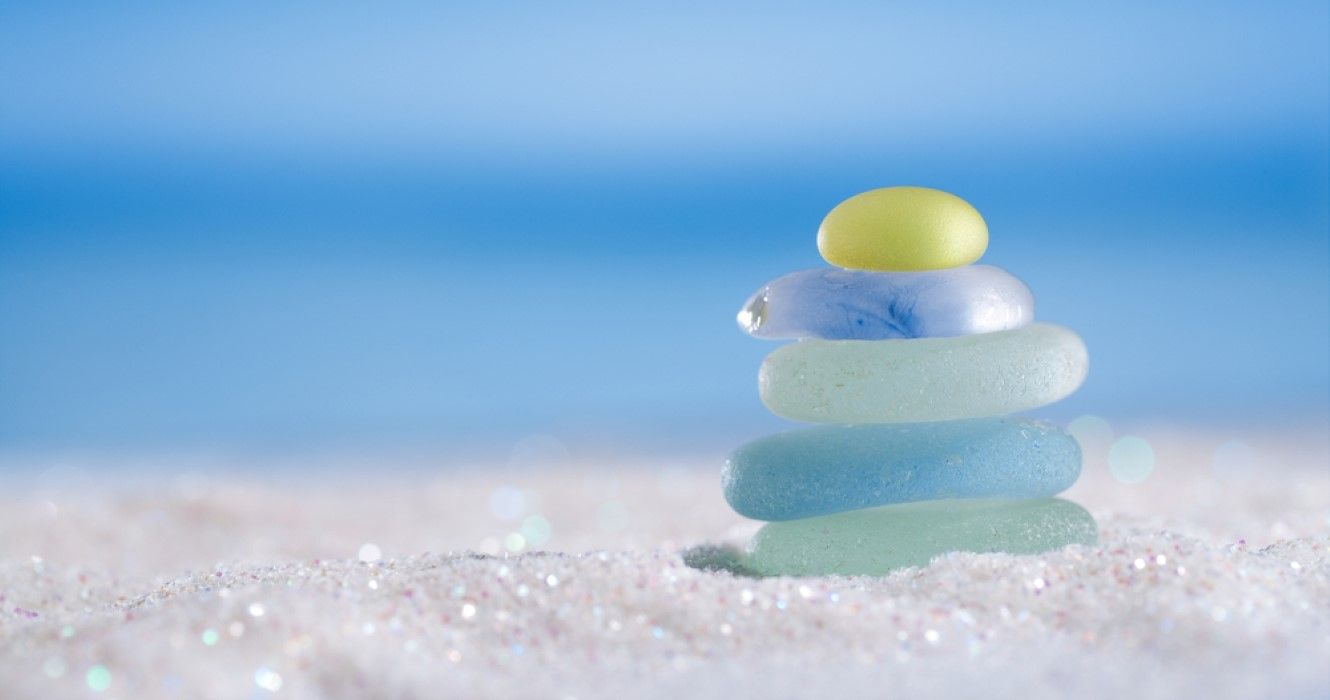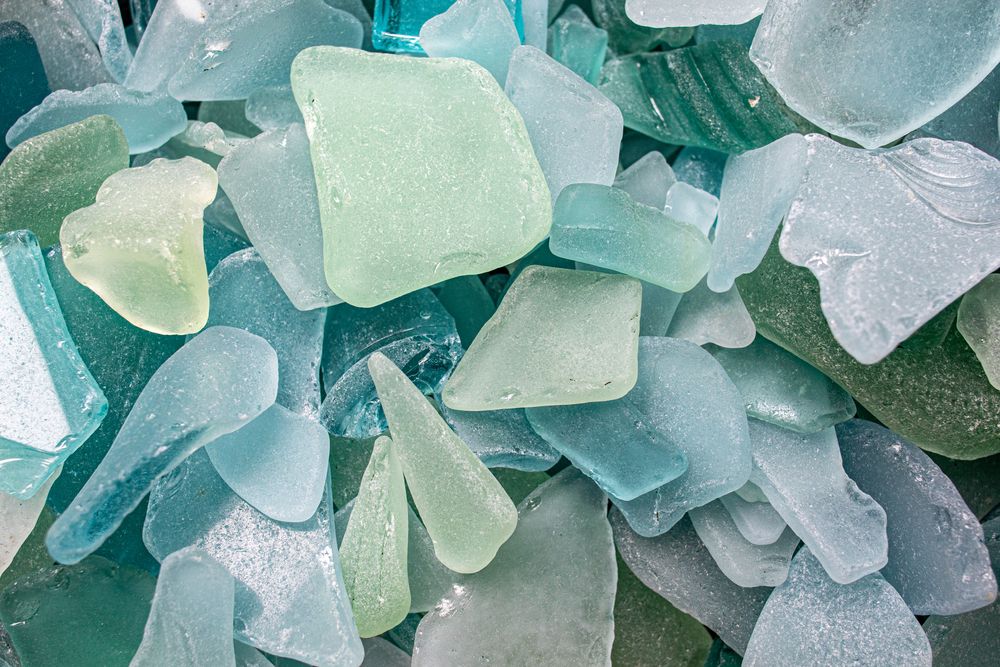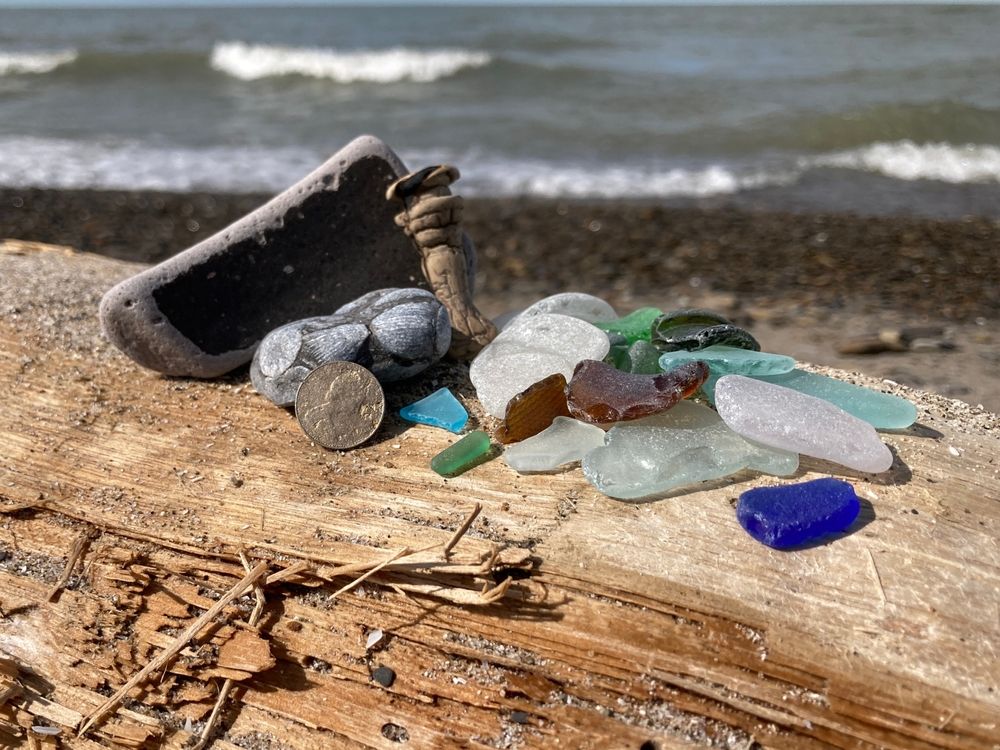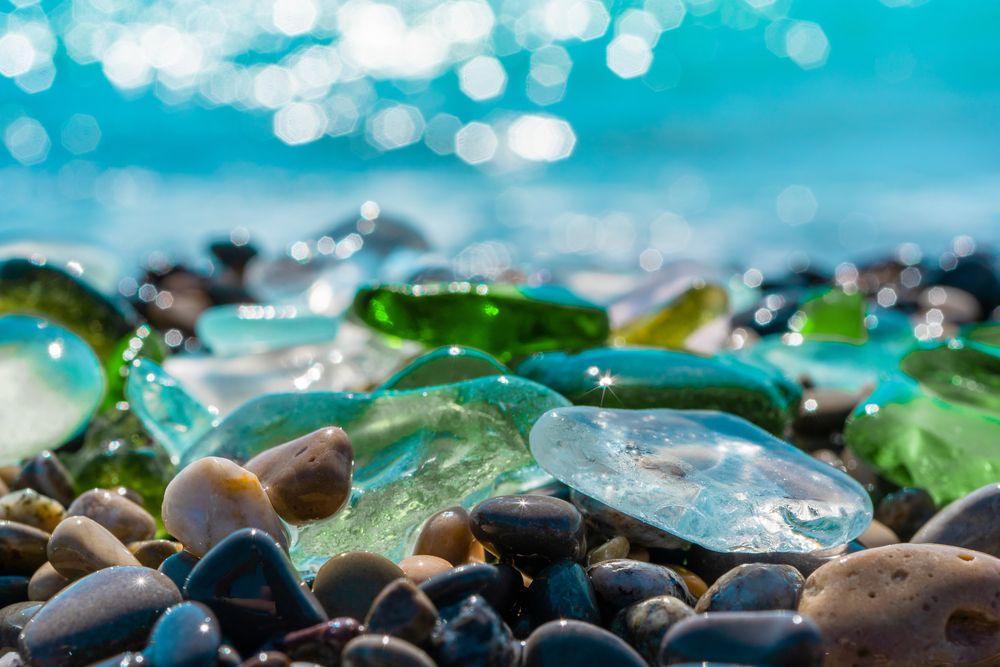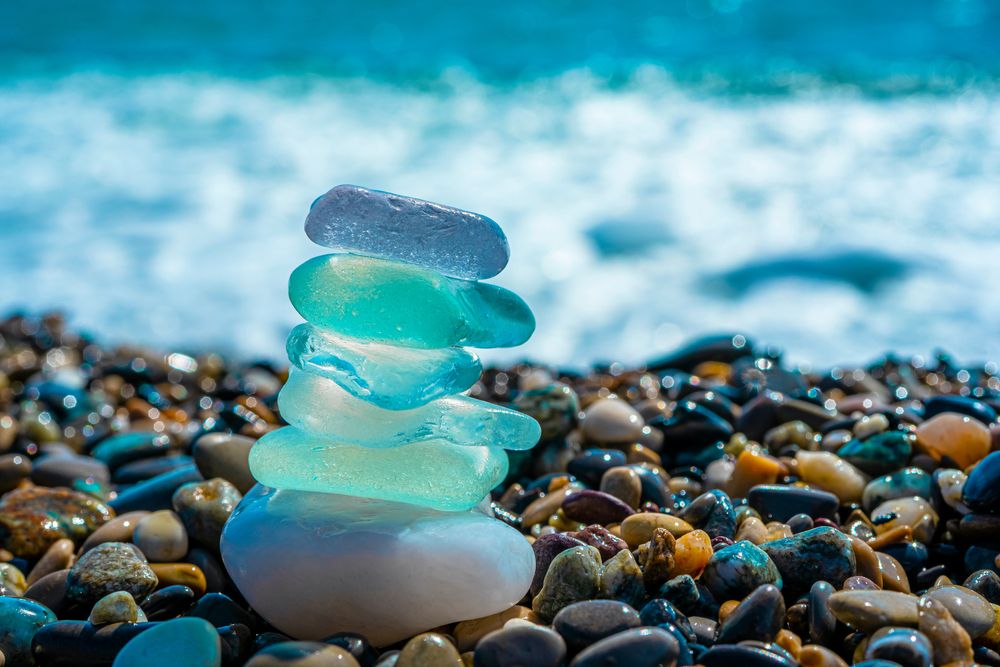Read update
- Which Sea Glass Is The Rarest, And Can You Find It At Any Beach? Your Questions, Answered
Quick Links
The art of beachcombing has been around seemingly forever. There's something somewhat mysterious about walking up to a sandy piece of land where the waves could leave anything on the shore, and there's something exciting about being the one to find it. Many strange and unusual things have been found on beaches but many beautiful things have been found, too - such as sea glass.
This is a result of glass falling into the ocean and being turned, tumbled, and smoothed over a course of years. The result is a fractured glass piece that has been smoothed and frosted thanks to etching that happens underwater (more about this later) and, at times, rare pieces can be worth hefty amounts of money. The great thing about sea glass is that it can be found practically anywhere there are bodies of water and waves, and if you're looking to start sea glass hunting, here's what to know.
UPDATE: 2022/05/26 13:01 EST BY LIANNA TEDESCO
Which Sea Glass Is The Rarest, And Can You Find It At Any Beach? Your Questions, Answered
Sea glass, also known as beach glass depending on where it's found, is still a commodity among avid beachcombers. While its value changes over time, the general rule of colors still applies, with red, orange, and yellow beach glass still being more valuable - and more historic - than any other colors. We've updated this article to reflect the fact that hunting for sea glass is still something people travel for, along with helpful information that will help direct them to find the most unique treasures while combing the beach.
How Long Does It Take To Make Sea Glass, And Where Can You Find It?
Believe it or not, some beach glass can take up to 50 years to turn into what it is by the time it washes ashore. It can also take as little as several years in order for all the sharp edges to be ground down; it all depends on the type of glass, its thickness, and the conditions of the water it's in. It's the constant motion of the waves, currents, and the sand in, and on, the bottom of the ocean floor that turns sea and beach glass into those perfectly frosted gems in a process that isn't easily replicated.
In short, beach and sea glass can be found practically anywhere there's a current, waves, and sand. It's less likely to be found on shores that have calm, gentle waves unless there's a feed from the ocean or another body of water that can really kick the waves up. Additionally, if a beach doesn't have any sand and is purely rocks or pebbles, there might be fewer pieces of glass since sand helps to wear down rough edges. A person is most likely to find these pieces of glass anywhere there are ships or nearby factories since, sadly, glass is among the trash that gets dumped into the water or thrown overboard.
Sea Glass Vs. Beach Glass
There is a difference between the two. Sea glass is what's found in the ocean, as its name implies, while beach glass is found near freshwater sources. Another difference is the pH level between the two, which contributes to the changes they both undergo chemically.
The salt from oceans and seas affects sea glass differently, altering its composition as well as its appearance and make it more frosty. Beach glass is worn down with fresh water (no salt) and sand, so it's usually less frosted but just as polished.
How Valuable Is It, Really?
In order to understand why sea glass, specifically, is so valuable, its diversity must first be understood. Sea glass can come in practically any shape or size, and it's entirely possible that it could be in the ocean for decades before washing ashore. The appearance of its frosted etching or completely polished surface will be a pretty good indicator of how long it's been floating around, and the more vintage the glass, the more valuable it could be.
Understandably, there are pieces of sea glass that are worth next to nothing, and not every piece will be a winner. Sea glass that has a unique shape, possessed interesting details, or is a unique color (more on that later) can go for up to $10 per piece. Sea glass that's of the rarest color, and is medium to large, can fetch a price up to $100 to the right jeweler or artist.
Color Charts And What The Color Of Each Piece Means
Each color is worth something different in the sea glass world. The most common color and the one that's worth the least is white or clear; many times, clear glass gets its white or off-white color from the frosted etching that happens while it's in the ocean. The colors of sea glass can vary depending on its rarity, and include:
- White/clear
- Dark green
- Brown/beige
- Red
- Orange
- Yellow
Dark green and brown are the second most common and usually come from bottles that have been left or dumped into bodies of water. In the process of being broken by waves and rocks, these bottles become smaller pieces that then get polished and worn down before washing ashore.
Rare colors are red, orange, and yellow. These specific colors narrow down the source of the glass and usually date back pretty far, making the pieces of sea glass fairly vintage. At one point in time, according to Sun-Surf Reality, red glass once required real gold in order to dye the glass that signature, fiery hue, making it very valuable today. The most valuable sea glass colors are light blue and turquoise, both of which usually come from vintage mason jars and medicine bottles. Since that glass is rarely used today, these colors are tougher to find.
How To Improve Your Chances Of Finding Sea Or Beach Glass
The best way to improve one's chances of finding valuable or unique pieces of sea or beach glass is to find a beach where beachcombing is a common hobby. There are many on either coast, and even some lakes around the country are home to shores where interesting pieces of turned glass can be found.
Additionally, reading the reviews of beaches can help guide the search, based on what others have found during their searches there!

